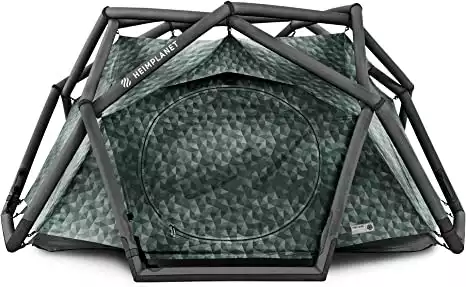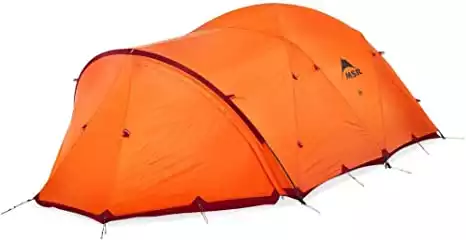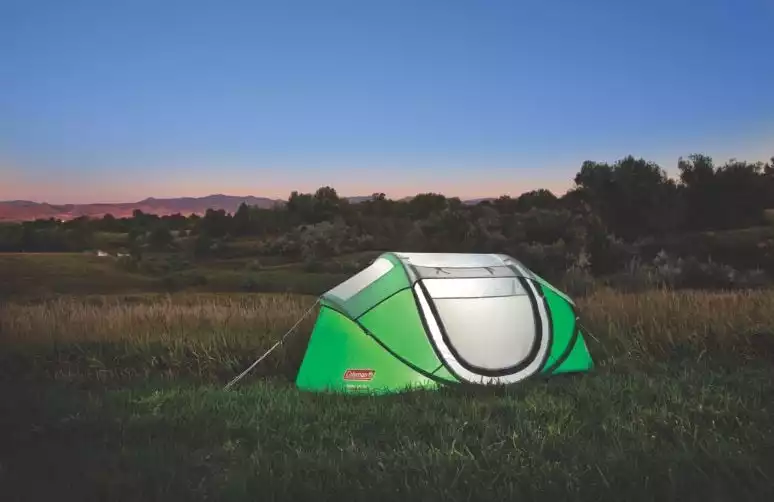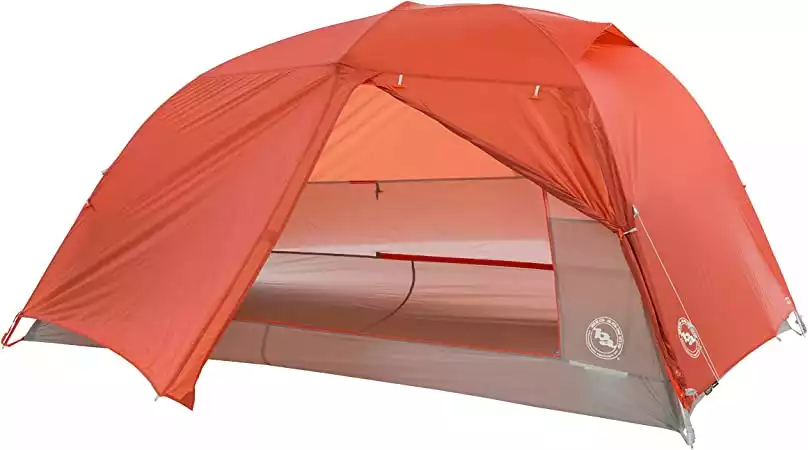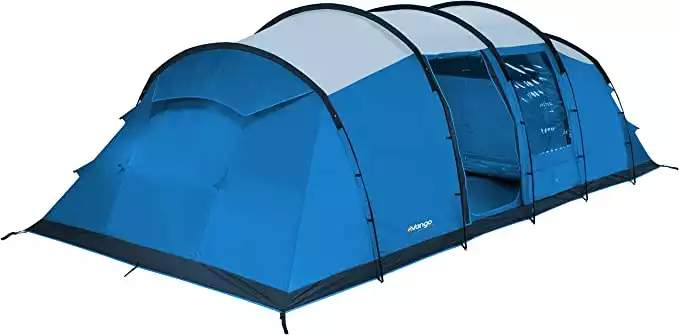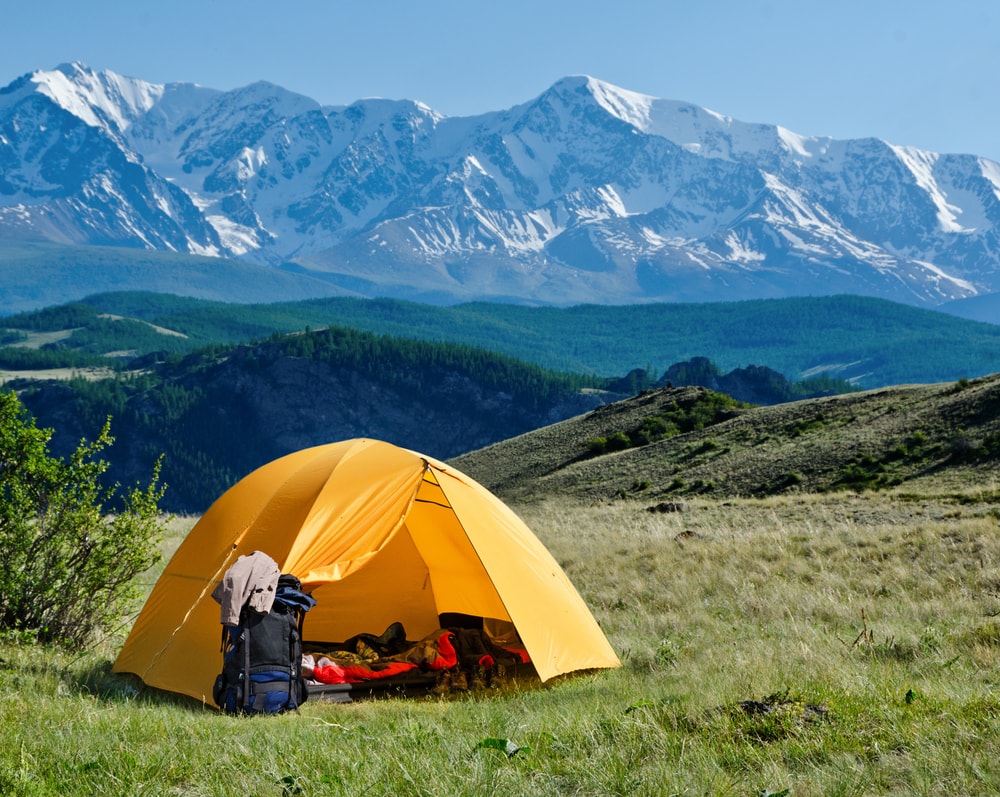
When you think of a tent, you might imagine a tepee sort of structure, but there are many other types of tents available.
Knowing about them could ensure that you choose the best tent for the adventure that’s calling you into the wild.
What to consider when choosing a tent? If you’re looking for a tent that can withstand harsh conditions, you’ll obviously need to take features such as weatherproofing into account, as well as ensure the tent is made of durable materials.
But, the style of tent you choose will also make a difference. With that in mind, let’s explore the 11 coolest types of tents that you can find. Some are better equipped to help you deal with the harsh elements on your camping adventure, while others are perfect for beginners.
We’ll start with a tent that provides you with features to block out harsh weather conditions so it’s perfect for extreme camping adventures.
1. Geodesic Tent
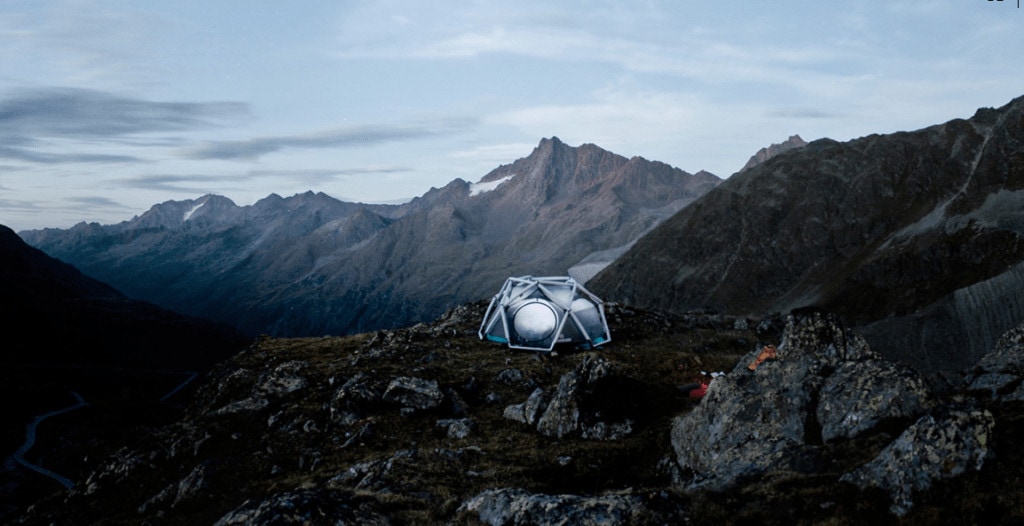
The usual shape of a geodesic tent is a semi-sphere or dome. This tent has a minimum of three crossover poles that keep it stable. Interestingly, although the geodesic tent looks very modern, it actually first came about around 1975.
One of the main purposes of geodesic tents is that they are stable enough for use in very harsh conditions because they can withstand the elements more than other tents.
Stability aside, the extra number of poles that they have also means that the inside of these tents is quite spacious. Some other advantages of geodesic tents, like the Heimplanet Original Dome Tent, is that they offer good amounts of headroom and since they’re built to be stronger they tend to have a longer lifespan than other tents.
However, they’re not without their drawbacks. Geodesic tents have a streamlined design which makes them unsuitable for large groups and they tend to be more expensive than other types of tents. Due to how they’re built, they are also more difficult to carry around.
- 2-3 Person inflatable geodome tent
- With a one-pump system for easy pitching
- Stable and sturdy with its double-layer construction
2. Bivy Tent
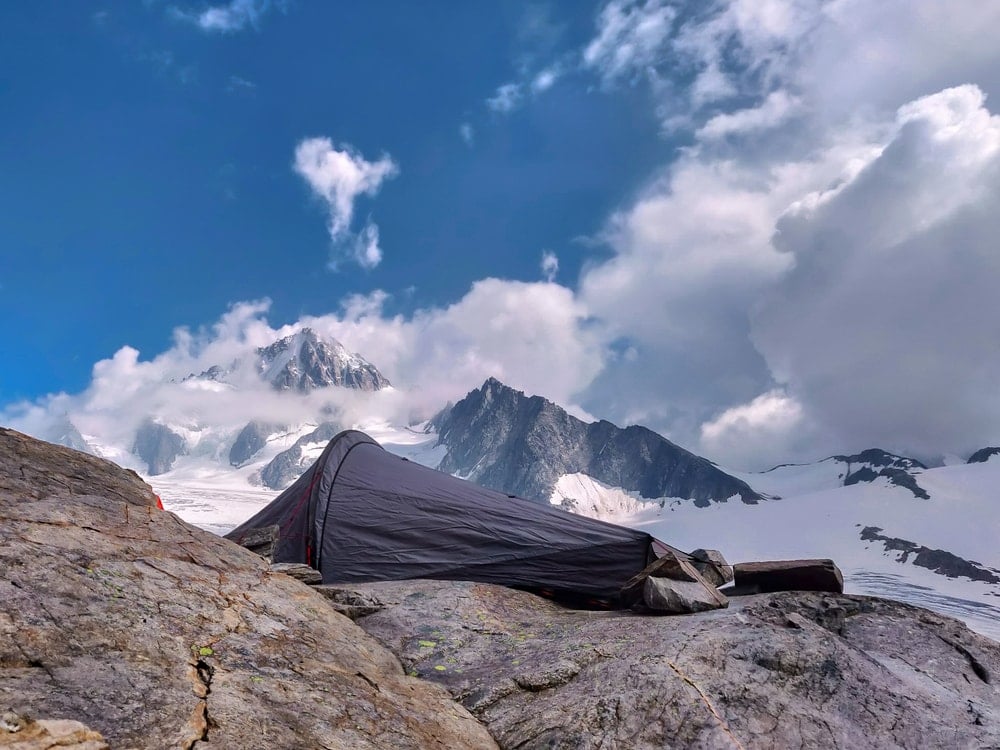
While not exactly a tent, a bivy – usually known as a bivy sack – is a minimalist outdoor shelter that can accommodate one person. It provides the user with an extra layer of protection against the environment for themselves and their sleeping bag.
Interestingly, bivy sacks came about as emergency shelter for the outdoors, but they’re becoming popular for general camping use and you can find them in different designs. Conventional bivy sack designs are really simple and weigh a lot less than a tent you’d use for one person. They’re focused on giving you a minimalist, very practical approach to camping.
However, you can find what’s known as bivy shelters. These come with internal poles to increase your amount of headspace and they usually have zippered doors so that you can feel like you’re in a tent.
A bivy is useful as a tent alternative because it’s highly compact and portable, plus it gives you more immersion into the natural world around you. That said, it’s not practical if you’re camping with someone else. You also can’t really do much in a bivy other than sleep in it.
In case you’re wondering where the bivy got its name, it actually dates back to World War 1, when it was used as army slang for bivouac, which is a temporary shelter or a small tent.
3. Triangular Tent
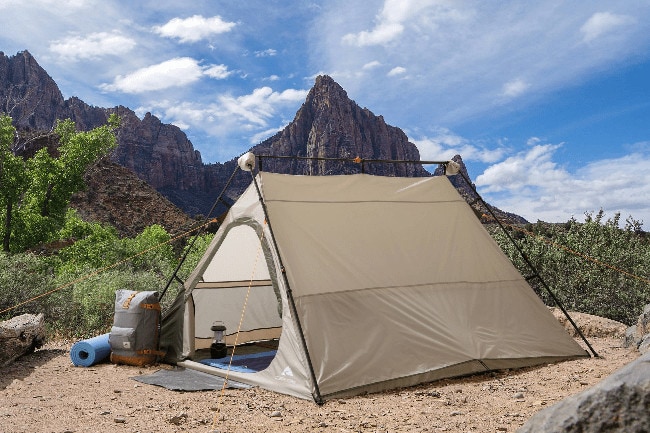
A triangular tent is also known as an A-frame ridge tent. It’s perfect for when one or two people are camping. Since it makes use of a sloped design, this makes it stable enough to withstand strong winds.
You can find bigger versions of the triangular tent – these look like they have four walls and a sloped roof to accommodate more people, but they need more guylines in order to offer greater stability.
While triangular tents are great for beginners because they’re easy to set up, they do fall short when it comes to offering enough space, like when it comes to their headroom.
If you like the idea of making your own tent, the triangular tent is perfect for such a DIY project because it’s so easy to do. You’d just need sticks, a plastic tarp, rope, and stakes or rocks. If that sounds intriguing, you can find out more by checking out this tutorial and this Youtube video.
4. Baker Tent
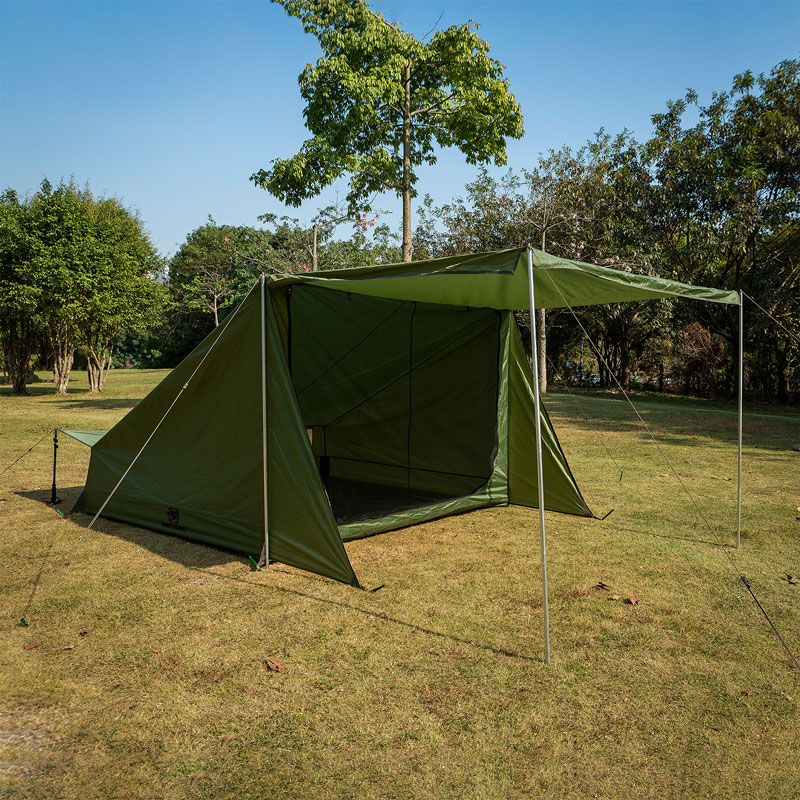
While its name is a little odd, a baker tent is a rectangular lean-to with an open front that’s protected by a horizontal flap. It usually has a sleeping compartment with a PVC floor that’s been sewn into its design.
It also has a sloping roof towards the back and a spacious porch area, which also has sewn-in flooring. This gives you the chance to have a fireplace in the front of the sleeping area.
It’s been found that the baker tent can be traced all the way back to World War 1, when bakers would use lean-to tents to enable them to prepare meals for army troops. So, it makes sense as to why this tent got its name!
The baker tent is useful if you want separate areas in your tent, plus there’s something throwback-worthy of choosing such a traditional tent. Modern baker tents will be designed with features to make them durable and strong, without sacrificing their spaciousness. If you’re a DIY enthusiast, you might fancy making your own baker tent, in which case this baker tent tutorial is a must for you to view.
5. Tunnel Tent
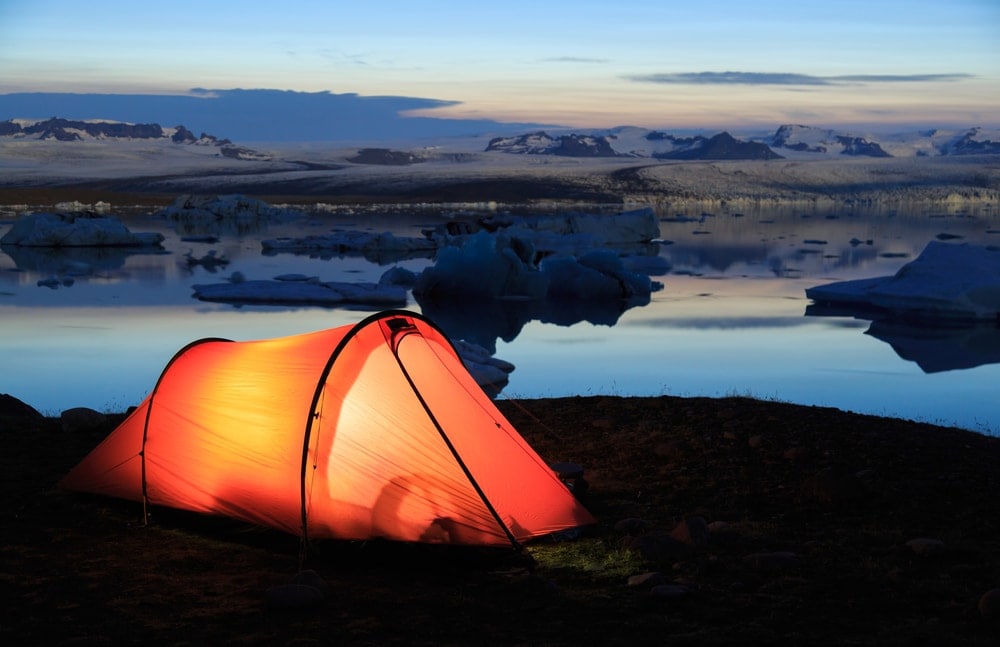
As its name suggests, a tunnel tent is a tent that looks like a tunnel. It’s designed with a tent pole that’s put into a sleeve at regular intervals along the tent. This pole is flexible so that it can create an arched shape when the tent is upright. This provides a good amount of headroom in the tent.
Since most of the weight in a tunnel tent takes the form of its poles, the actual tent is lightweight, which makes it convenient to use. However, you have to ensure that the tent is pitched correctly otherwise it can lack stability, so it might not be that beginner-friendly.
One of the best reasons why you should invest in a tunnel tent is so that you’ll be able to make use of its large vestibule. This increases your storage space substantially while it can also be used as a social space when camping to make the tent more versatile.
- 4-Season, 2-person tent
- Roomy and provides space for gears
- Livable and weather-resistant
6. Pop-Up Tent
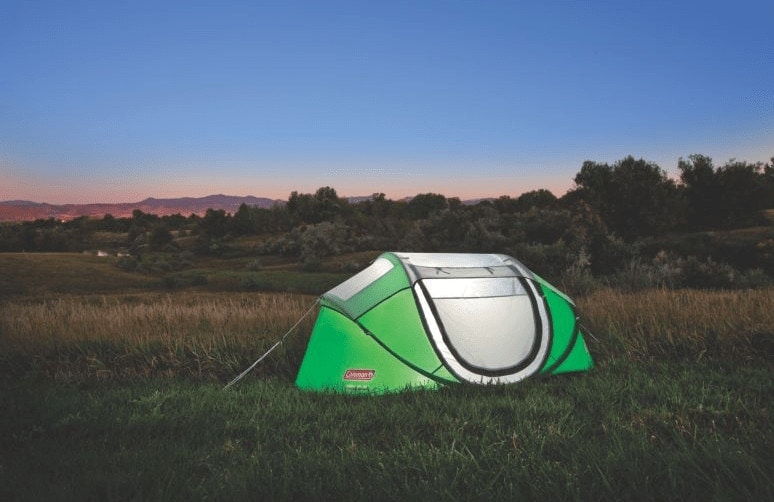
A pop-up tent, otherwise known as an instant tent, has become popular because it’s so easy to set up. These tents basically pop up (hence their name) so that they can be installed within a few seconds. To be a bit more technical, they have a coiled frame inside their fabric that springs into action when activated.
These types of tents are convenient and easy to use, even for beginners who’ve never gone tent camping before, which is why they’re also being used for many other activities – like when camping outside a concert or when requiring shelter at a music festival.
You can find pop-up tents in a variety of shapes, sizes, and styles, but what they have in common is that they’re all easy, compact and portable.
- Great for festivals and car camping
- Balance of protection and ventilation
- Measures 9'2 ft x 6'6 ft (279.4 x 198.1cm)
7. Dome Tent
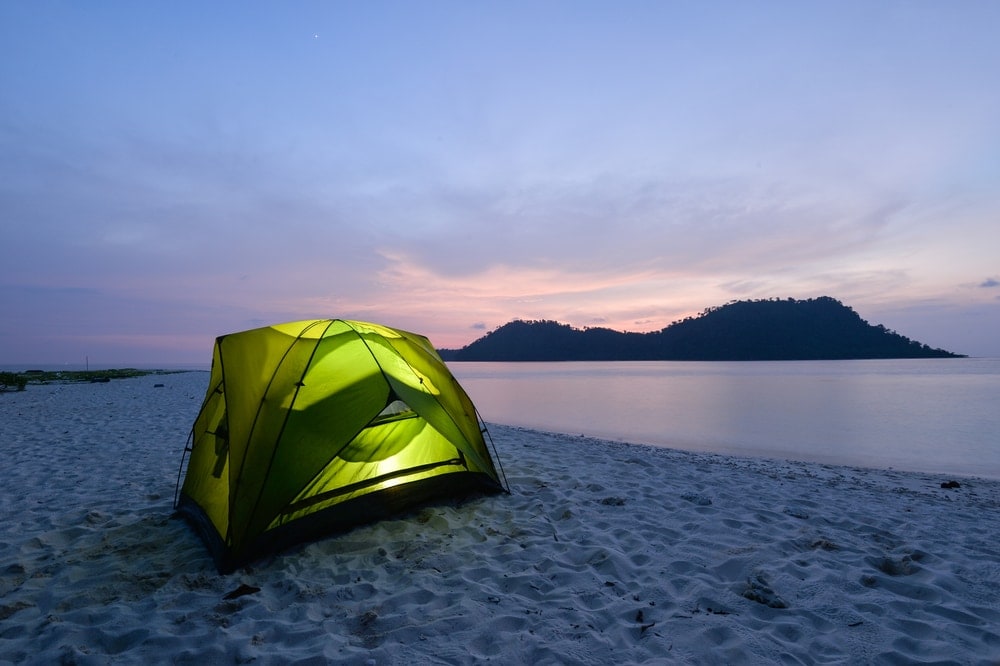
A dome tent is an ideal tent type for people who want to go camping in groups because they offer more headspace. This is a result of their design that ensures the tents are higher in the middle.
This type of tent works is that you unfold it by bending a flexible pole and then securing both ends of it to the ground before pegging the tent.
These tents are pretty easy to install and have many other benefits, such as being compact and collapsible for easier transporting. They don’t have a flat roof so they don’t accumulate rain or snow on top of the tent, and they are free-standing.
This means you don’t need guylines or stakes, which also reduces the amount of stuff that you have to carry in your backpack.
8. Hammock Tent
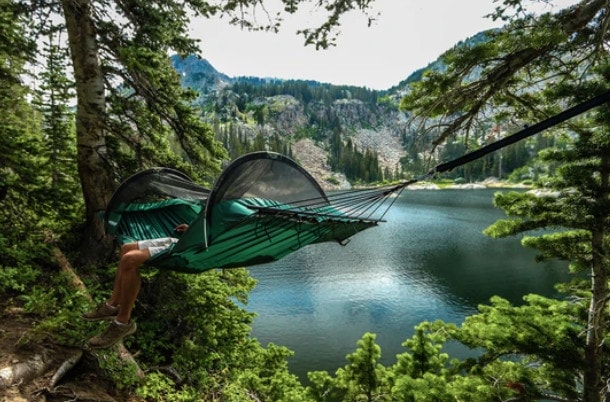
If you love the idea of enjoying sitting in a hammock when you’re in the outdoors so you can enjoy the beautiful forest or sunset views, you’ll love the idea of a hammock tent.
This type of tent is basically the same thing as a bivy tent, but it’s lifted off the ground. This can make you feel much safer if you’re camping in an area where the ground is wet or swampy, or there are lots of mosquitos around. Check our article about keeping mosquitos away while camping in case you need a guide and tips.
Using a hammock tent will also make you feel that you’re having a more comfortable camping experience. These tents are ideal for people who are camping on their own because of their limited space, but they have other benefits.
These include how they’re light and easy to pack and come with a built-in bug net for more comfortable camping. No bug net? No problem, because you can make your own with this hammock bug net tutorial.
You can also set up a hammock rainfly or tarp to reflect heat in the same way that this would work on a standard tent and you can also equip your hammock tent with extra accessories if you’re going to be using it in the winter, so it’s versatile.
Hammocks are an especially good choice during the summer when temperatures soar because they keep you off the ground where you’ll enjoy more breezes. And, since you won’t be using a sleeping pad, this will ensure greater circulation of air underneath the hammock.
- Rated as no.1 by backpackers
- Easy set-up, lightweight and waterproof
- Package includes rainfly, poles, bug net
9. Beach Tent
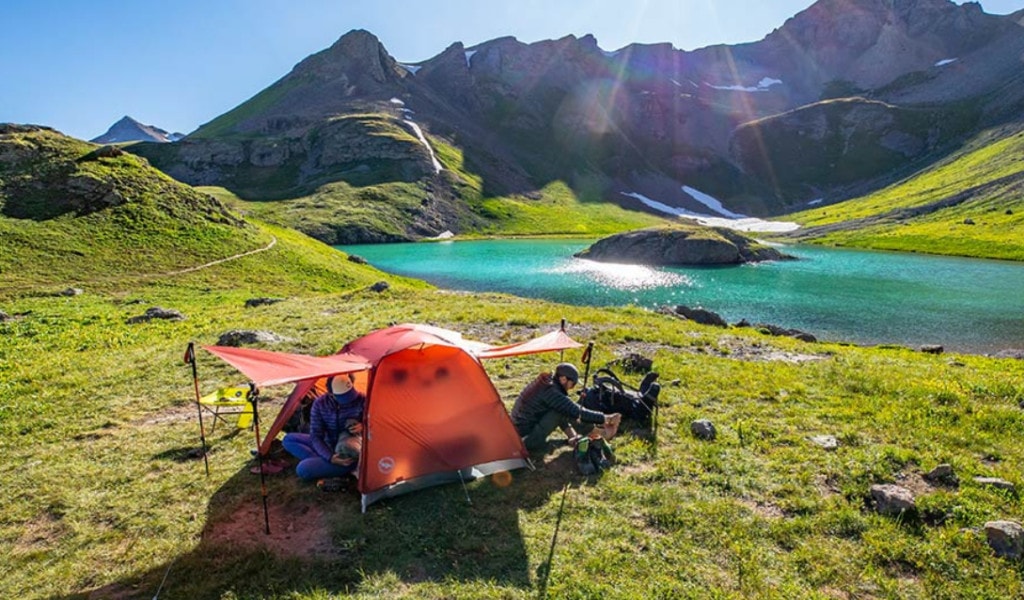
If you’re going to be camping on the beach, you’ll want to choose a tent that’s appropriately designed for the conditions you’re going to encounter.
A beach tent prevents sand from entering it while also ensuring you have a shady spot from which you can enjoy the ocean views without being exposed to harsh winds or strong UV rays that can ruin anyone’s day at the beach.
Beach tents vary from other types of tents because they have superior UV-blocking properties, which usually takes the form of a UV-protective sun coating. They also tend to have waterproof properties so that you can stay dry and protect your belongings.
You can find beach tents that have softer linings and non-abrasive fabric that ensure greater comfort. You can also get these types of tents with zippered doors to increase your privacy when you’re at the beach on a busy day. However, bear in mind that beach tents are useful for day camping but are not strong or durable enough for sleeping in.
- Allows stargazing transparency
- Adjustable vestibule awnings for more livable space
- Max occupancy of 2 people
10. Cabin Tent
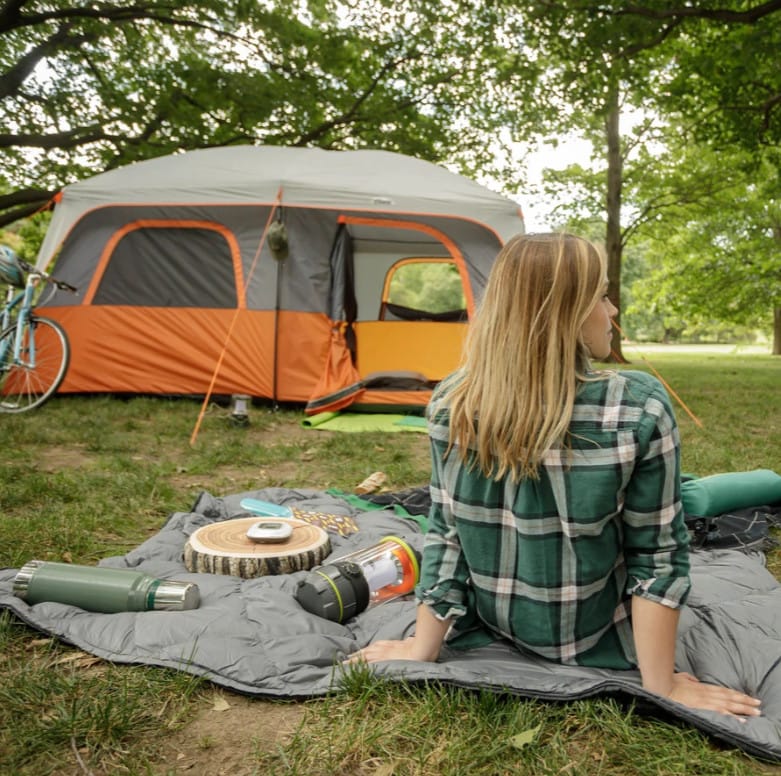
Cabin tents come in a variety of sizes and shapes but they tend to have a few similarities. These include higher points in the center and straight walls that increase the amount of space you have inside them.
This makes them a great choice for camping with the family or in groups of friends because you can find cabin tents that can accommodate up to six people in them, and these will offer approximately 100 square feet of floor area.
Cabin tents also usually have large windows to increase your views of the beautiful surroundings, and these can be closed up when you’re in search of greater privacy.
How cabin tents are constructed is with the use of aluminum poles that fit together. This is what produces a cabin-like frame. Canvas, such as in the form of nylon or polyester, covers the frame to create the roof and walls of the cabin tent.
Sometimes the cabin tent is divided into separate rooms with the use of dividers, which means you’ll also be able to get some privacy when camping in a larger group.
That said, these tents can be heavy to carry and can be tricky to set up, so they’re probably not best for beginners or people who want the convenience of a quick and easy tent setup. View this video to see just how easy it is to set up a pop-up tent.
11. Vis-à-vis Tent
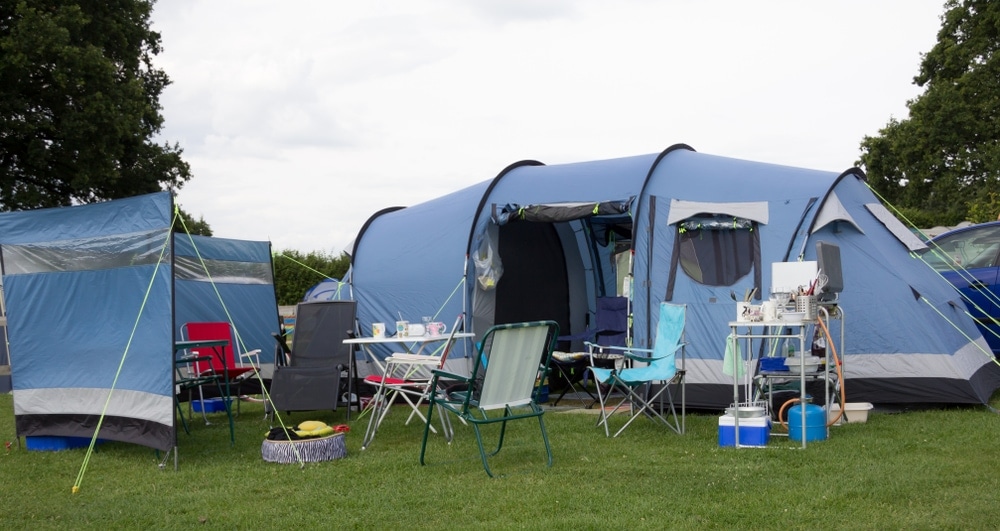
This type of tent is similar in design to a tunnel tent. In fact, it’s a tunnel tent that has a central living space. Some of these tents have that middle area as well as two dome tents – one on either side.
This makes them versatile and useful for large camping groups because they’re an upgrade on a standard tunnel or dome tent. The central area of the tent can double up as a porch, so you will be able to use this tent for all of your camping gear storage.
What’s interesting about these tents is that they originated in France where people would use the central part of the tent for increased headroom and then have smaller rooms along the sides for sleeping compartments. Since they were face to face, the tent design got the name vis-à-vis. Now you know!
- 8-person waterproof and weatherproof tent
- With full sewn groundsheet
- Easy to set up
You may also like: Smell Fresh In The Wilderness: How To Clean A Tent That Smells
Tents FAQs
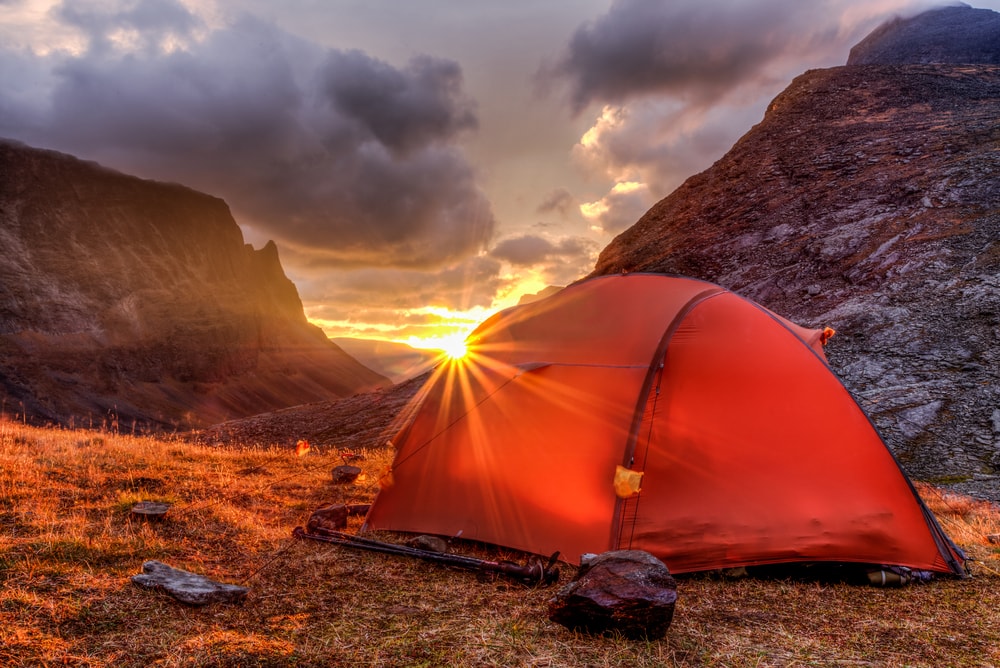
What are canopy tents?
These types of tents are more of a shelter than actual tents because they don’t have any sides. They’re basic to offer you a bit of protection from the elements, but they can’t give you more protection for the outdoors and camping
Do you need a rainfly for your tent?
This is an essential item to carry if you know that the campground is going to experience dew or rain. It’s waterproof and fits over the tent roof to offer you greater protection and warmth.
You may also like: No Tent? No Problem! Check Out These Awesome Ways and Pro Tips on How To Make Your Own Camping Tent From Scratch
Conclusion
When you’re heading out on a camping adventure, you’ll need to ensure you have the best camping tent.
There are tons of tents available on the market, so it can be overwhelming to try to decide which one to get. After reading this guide to the 11 coolest types of tents, you’ll surely have a better idea.



